A Survey of Factors Considered by High School Students in Choosing a College
Analysis of results
A questionnaire was administered to high school students regarding the factors they consider when choosing a college. The questionnaire had four main questions and eight sub-questions. The number of valid questionnaires filled out was 136.
I. Basic Characteristics Acquisition
There is one sub-question under the first main question, involving basic information about the students who filled out the questionnaire, i.e., the grade of the student, and whether the student is from the International Department or the Domestic Department.
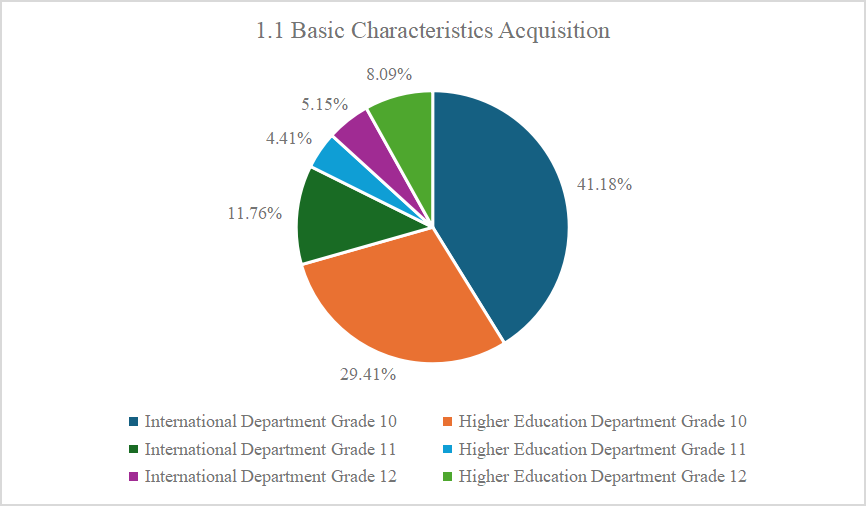
The pie chart shows that the questionnaires came mainly from the International Department (58.09%), which is more in line with our expected source of questionnaires. The largest percentage of the questionnaires came from Grade 10 in the International Department, followed by Grade 10 students in the Domestic Department. The cause of the higher number of completed questionnaires in Grade 10 is related to our social circle.
II. The importance of some factors in mind when choosing a college
There are seven sub-questions under the second main question, investigating aspects related to the evaluation of the importance of academic factors, campus environment, living expenses, job prospects and campus culture.
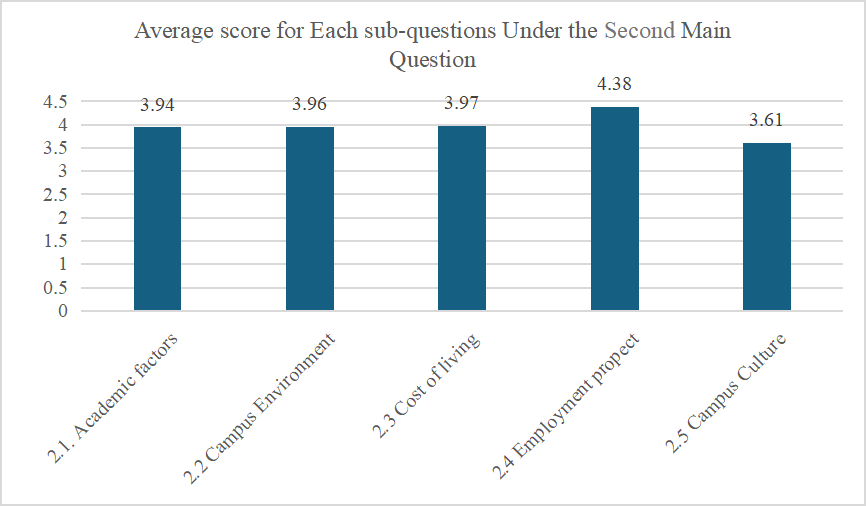
The bar graph above shows the average score for each sub-questions under the second main question. This can help us evaluate the importance of the five main factors when students consider whether a college fits them or not on the macroscopic level. The higher the score, the more importance the factor. In this way, when designing the website, we will put the most important factor in the most prominent place in the web panel.
2.1. Academic factors
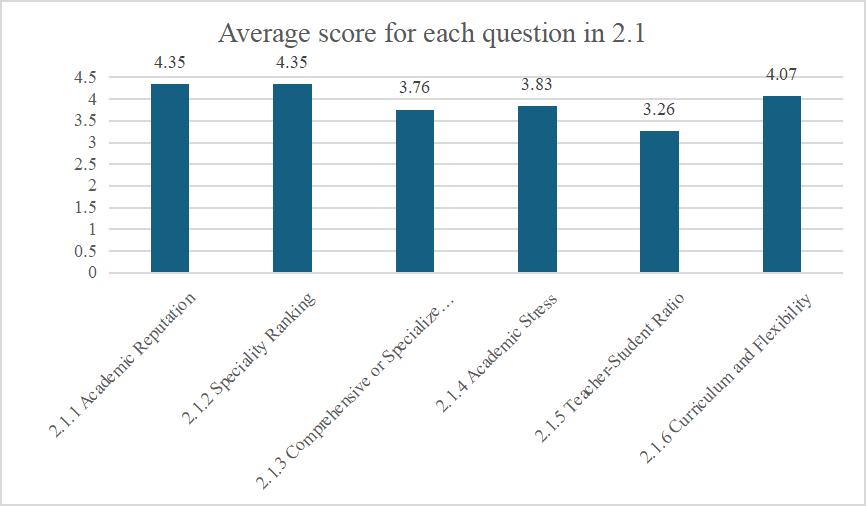
The bar graph above shows the average score for each question under the first sub-question. This can help us evaluate the importance of the six factors regarding “Academic Factors” when students consider whether a college fits them or not. The higher the score, the more importance the factor. In this way, when designing the website, we will put the most important factor in the most prominent place in the web panel under the “Academic Factors” part.
2.1.1 The first question is academic reputation, i.e. the importance of a university's academic reputation in the mind of the student completing the form.
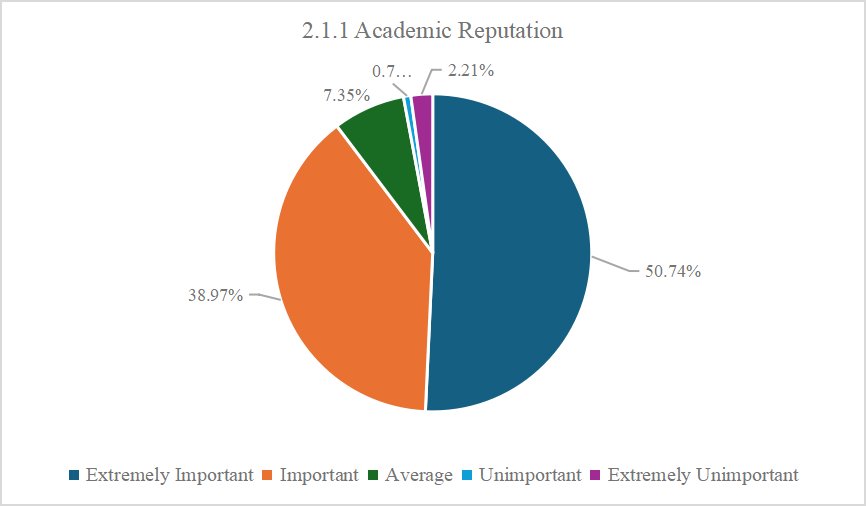
2.1.2 Specialty Ranking
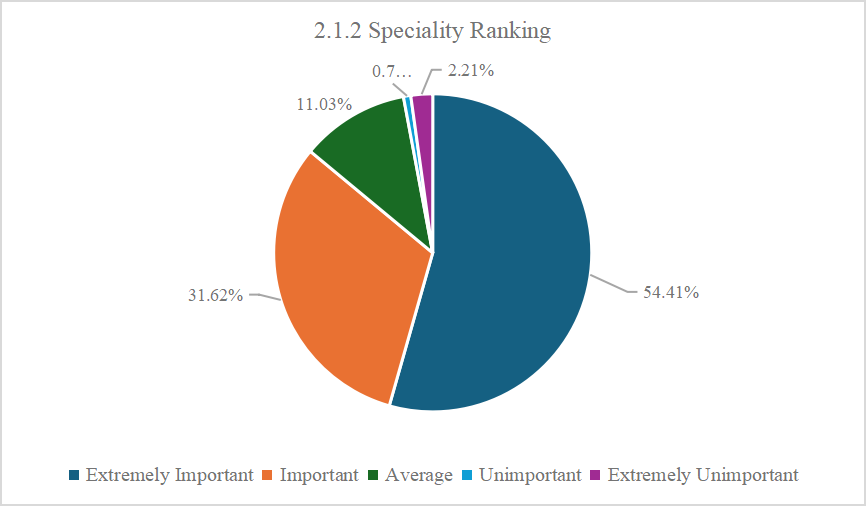
2.1.3 Comprehensive or Specialized University
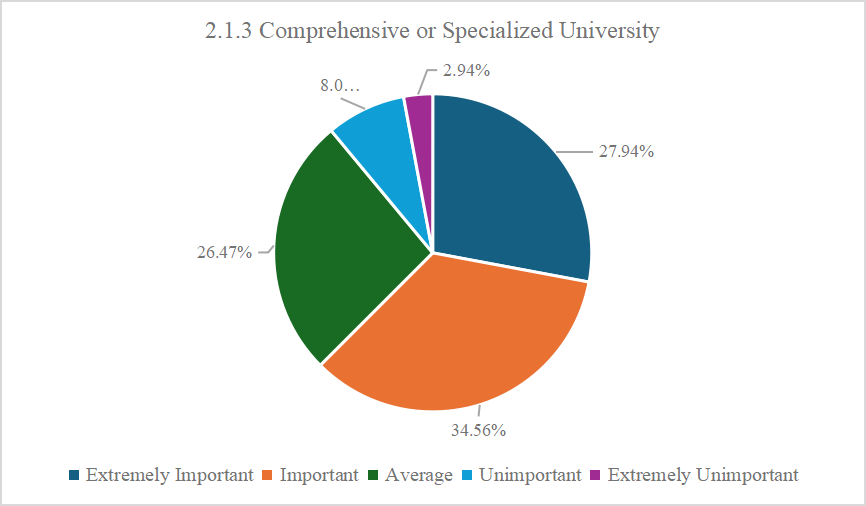
2.1.4 Academic stress (Including the amount of homework, the amount of testing, the rigor of GPA requirements, and the difficulty of graduating.)
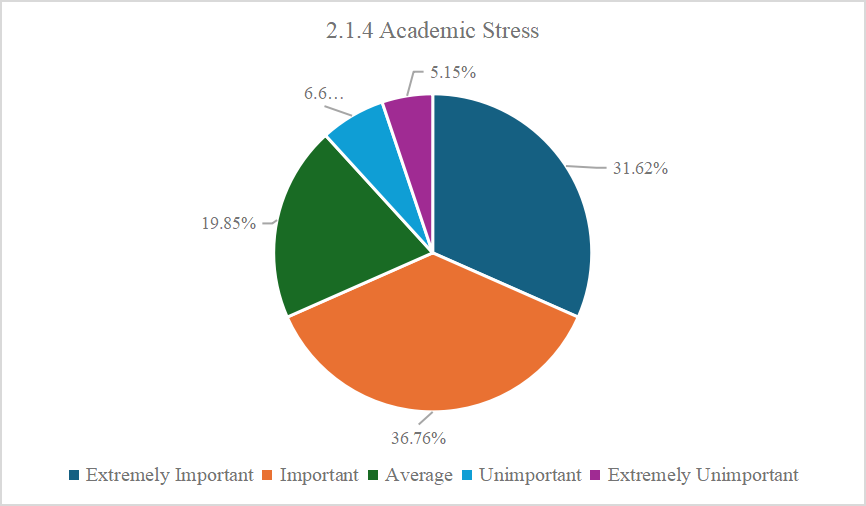
It is important to note that since academic stress can vary among different majors at the same university, here in the data collection, we will only consider the combined academic stress of a particular university and will not rate it separately for a particular major.
2.1.5 Teacher-Student Ratio
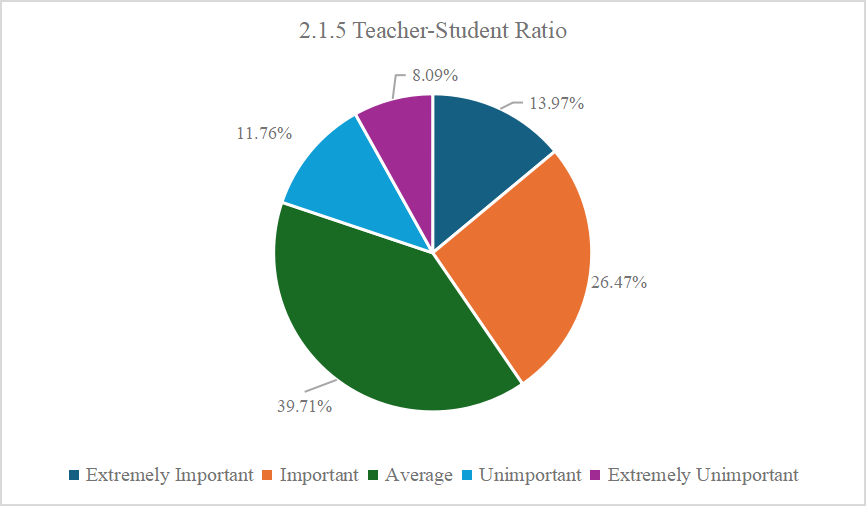
2.1.6 Curriculum and Flexibility
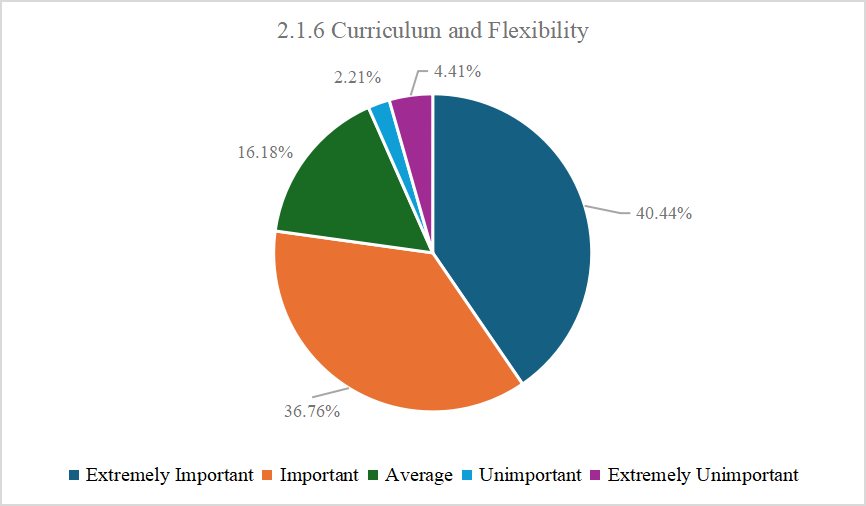
2.2 Campus Environment
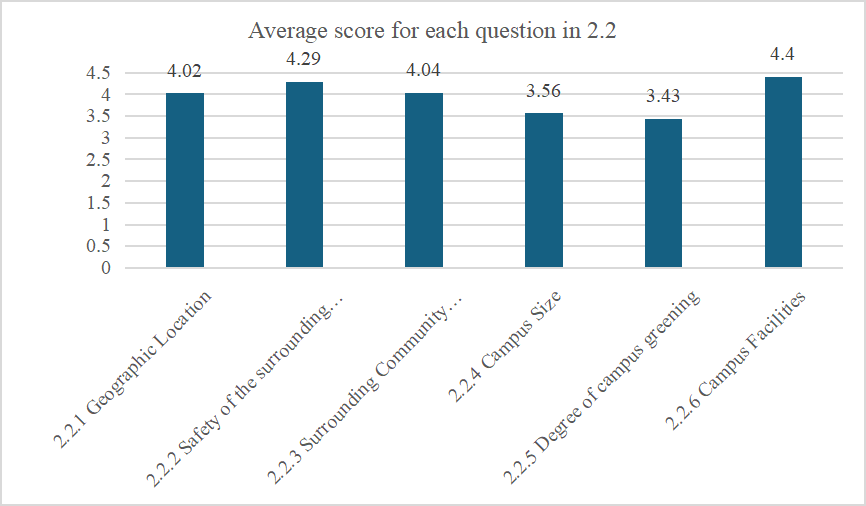
The bar graph above shows the average score for each question under the second sub-question. This can help us evaluate the importance of the six factors regarding “Campus Environment” when students consider whether a college fits them or not. The higher the score, the more importance the factor. In this way, when designing the website, we will put the most important factor in the most prominent place in the web panel under the “Campus Environment” part.
2.2.1 Geographic Location
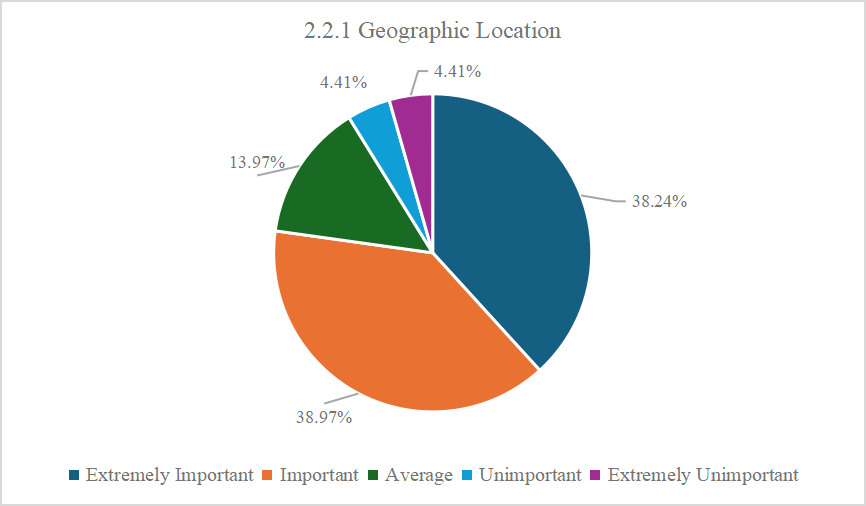
2.2.2 Safety of the surrounding community
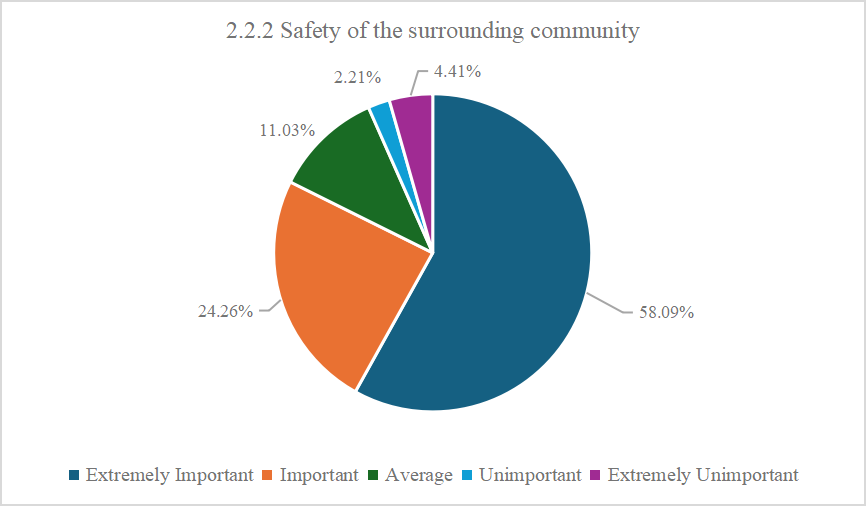
2.2.3 Surrounding Community Convenience
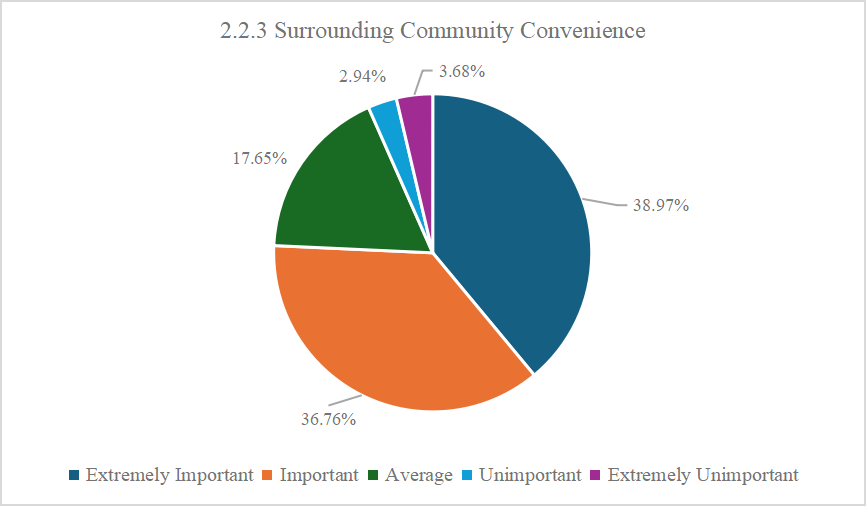
2.2.4 Campus Size
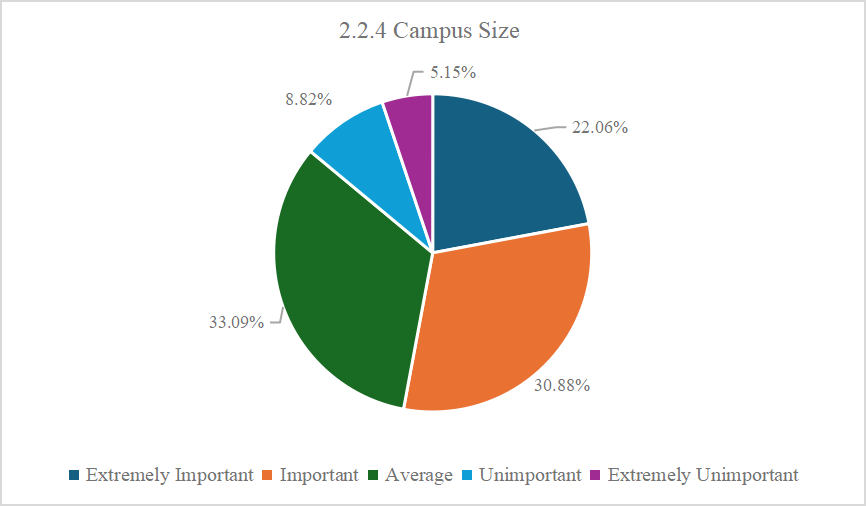
2.2.5 Degree of campus greening
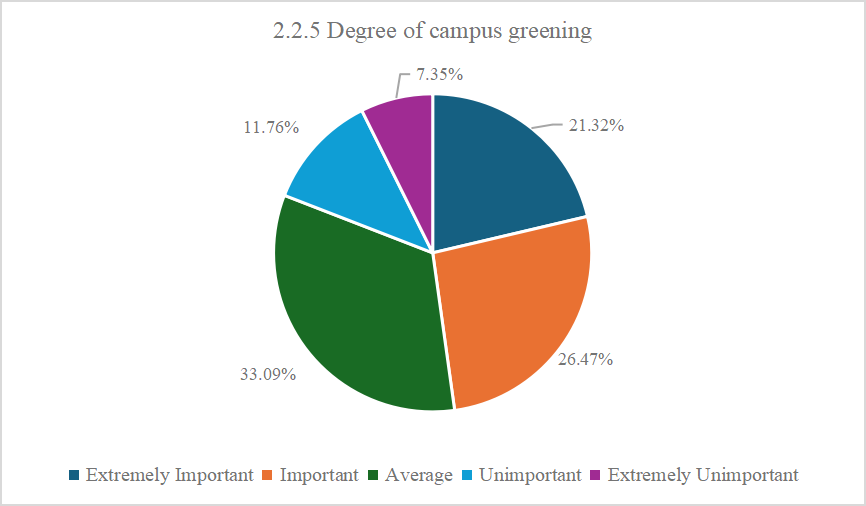
2.2.6 Campus Facilities
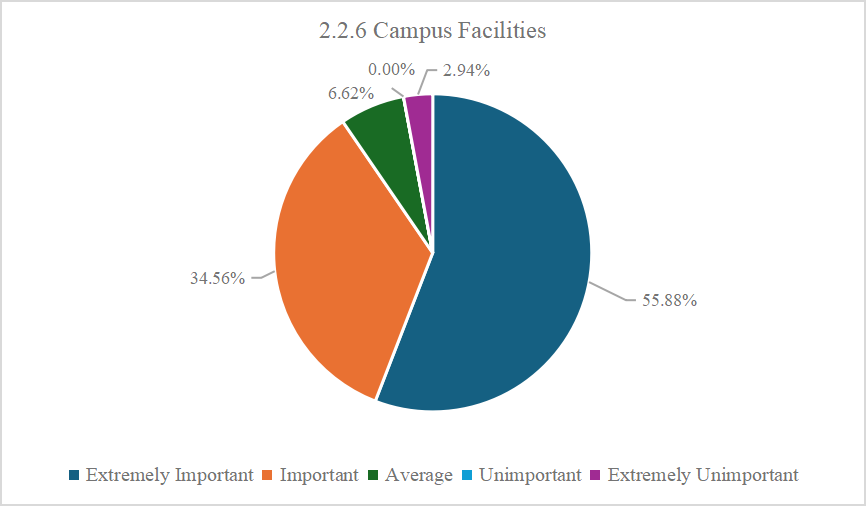
2.3 Cost of living
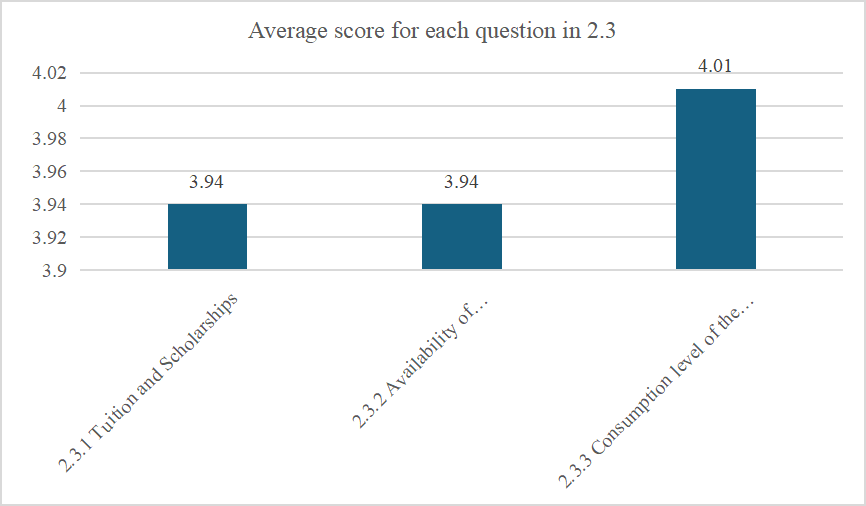
The bar graph above shows the average score for each question under the third sub-question. This can help us evaluate the importance of the three factors regarding “Cost of Living” when students consider whether a college fits them or not. The higher the score, the more importance the factor. In this way, when designing the website, we will put the most important factor in the most prominent place in the web panel under the “Cost of Living” part.
2.3.1 Tuition and Scholarships
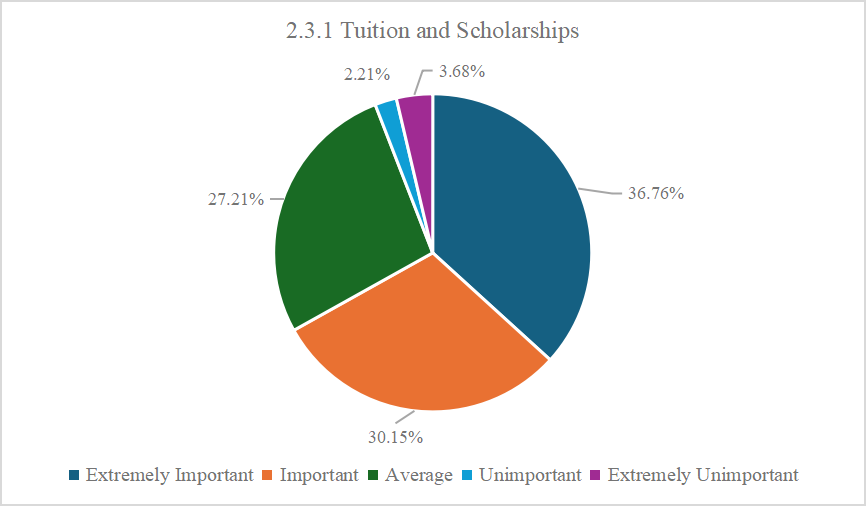
2.3.2 Availability of accommodation
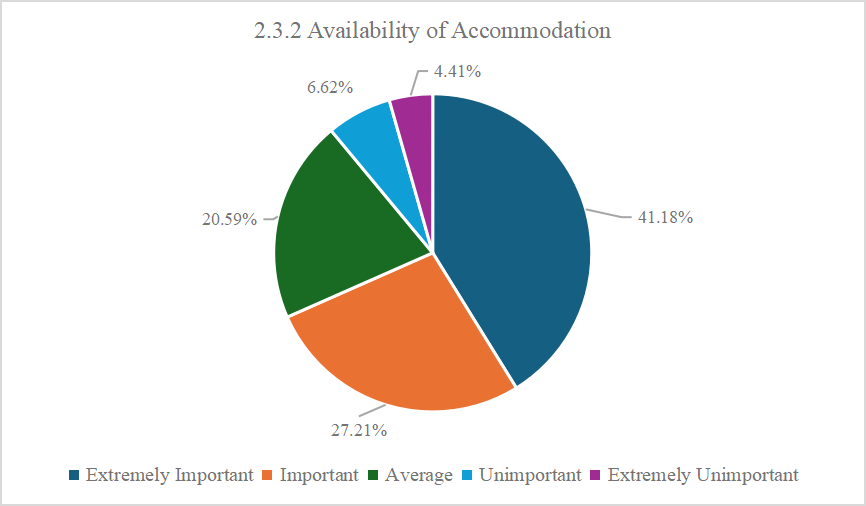
2.3.3 Consumption level of the surrounding community
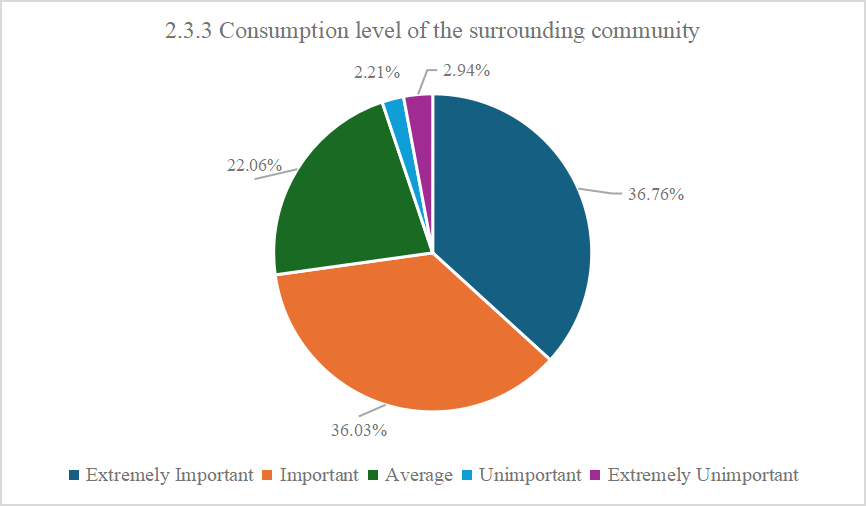
2.4 Employment prospect
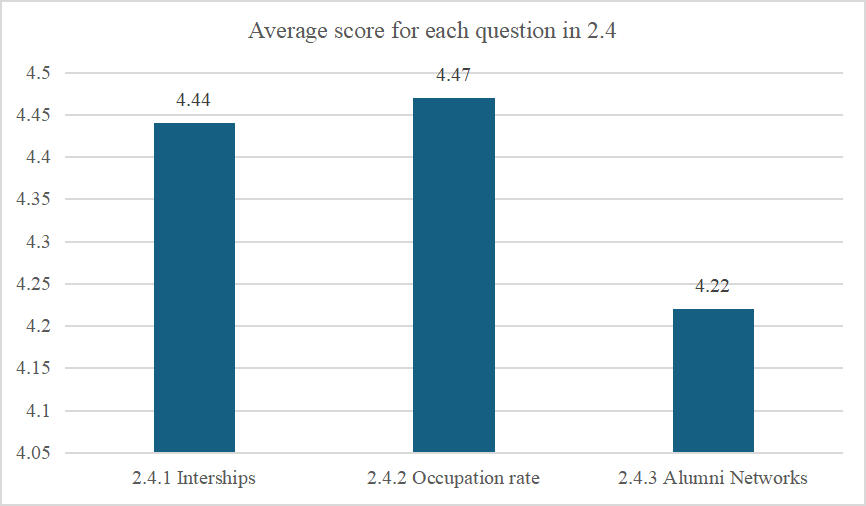
The bar graph above shows the average score for each question under the fourth sub-question. This can help us evaluate the importance of the three factors regarding “Employment Prospect” when students consider whether a college fits them or not. The higher the score, the more importance the factor. In this way, when designing the website, we will put the most important factor in the most prominent place in the web panel under the “Employment Prospect” part.
2.4.1 Internships
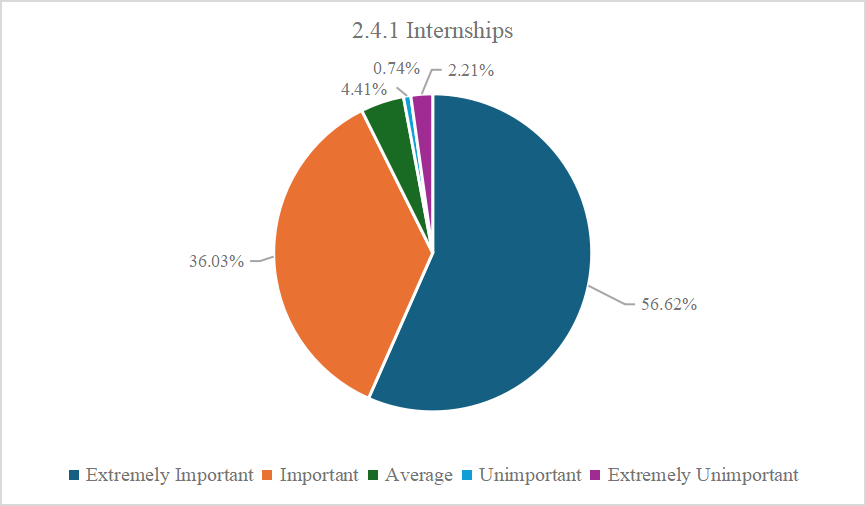
2.4.2 Occupation rate
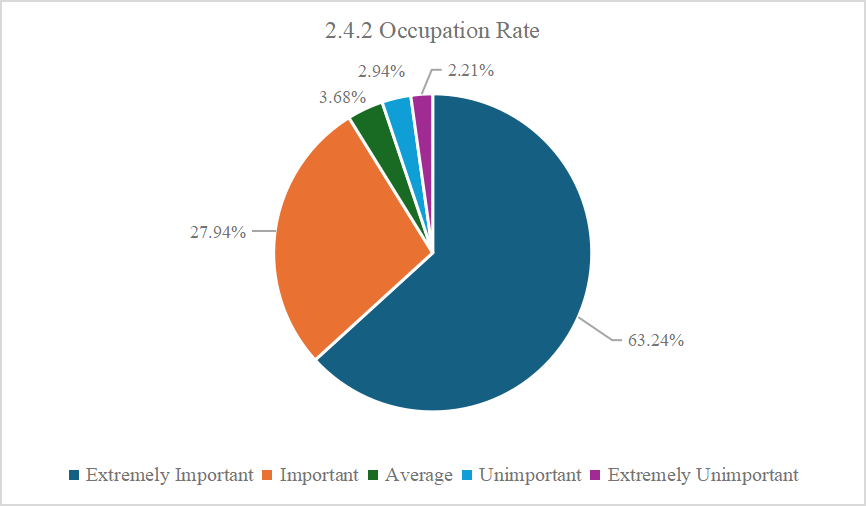
2.4.3 Alumni Networks
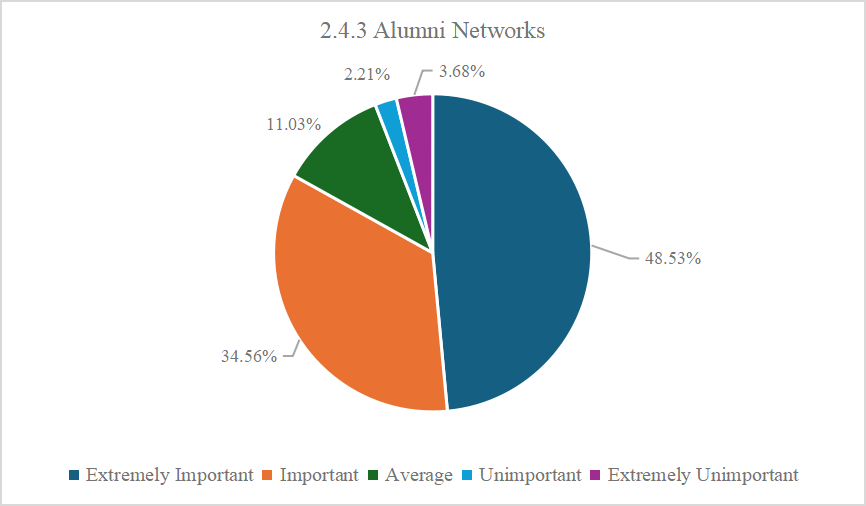
2.5 Campus Culture
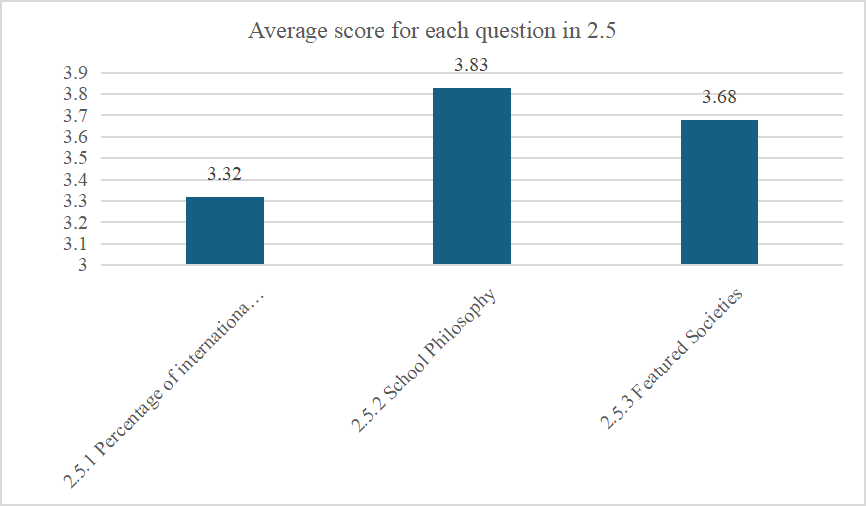
The bar graph above shows the average score for each question under the fifth sub-question. This can help us evaluate the importance of the three factors regarding “Campus Culture” when students consider whether a college fits them or not. The higher the score, the more importance the factor. In this way, when designing the website, we will put the most important factor in the most prominent place in the web panel under the “Campus Culture” part.
2.5.1 Percentage of international students on campus
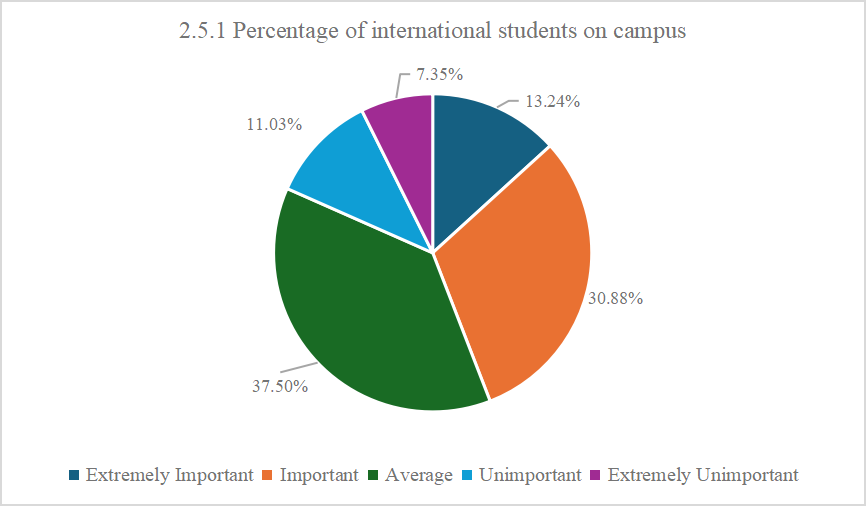
2.5.2 School Philosophy
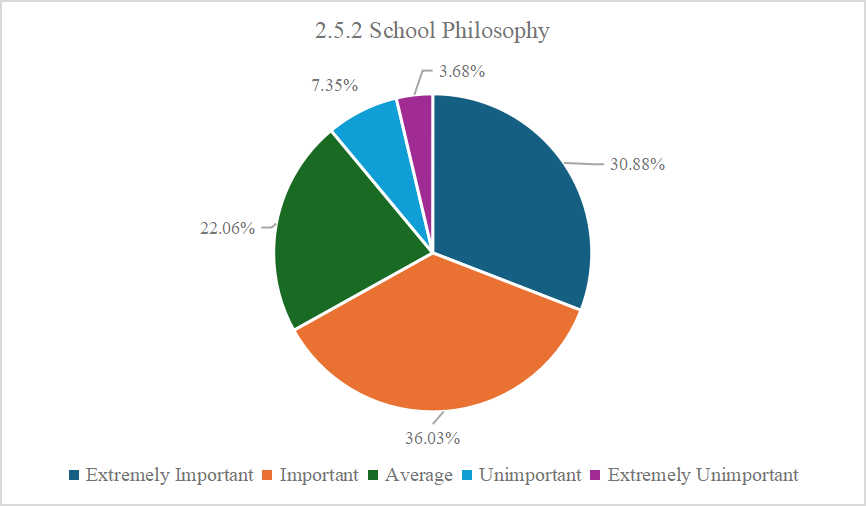
2.5.3 Featured Societies
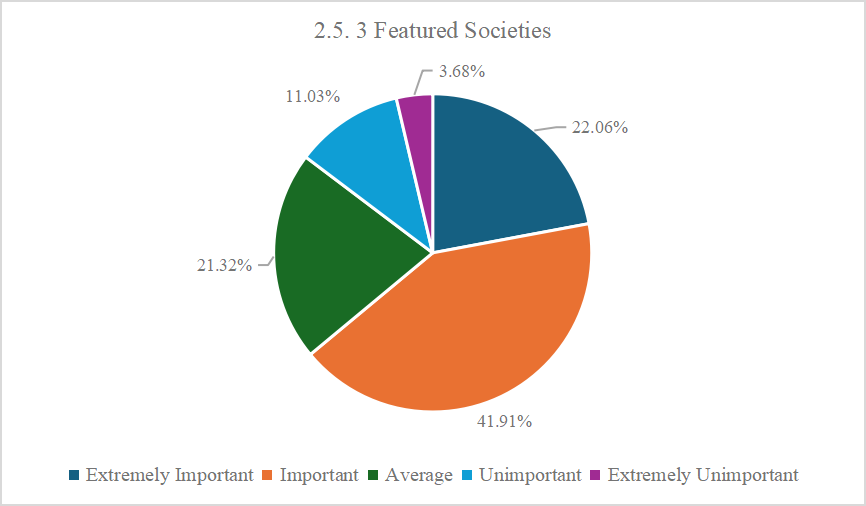
III. Ranking
There is only one sub-question in this section, that is, applicants need to rank “Academic Factors”, “Campus Environment”, “Cost of Living”, “Employment Prospect”, and “Social Factors” according to the order they consider when choosing a university.
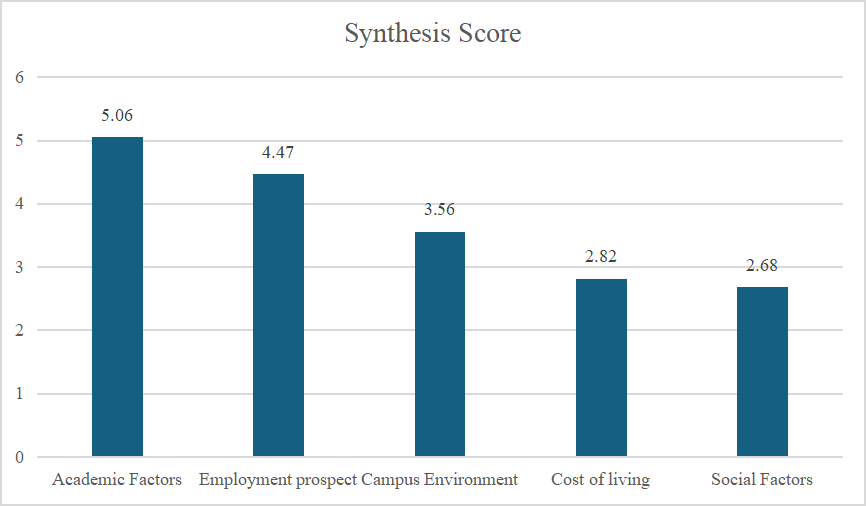
IV. University Ranking List
There is only one sub-question in this section, involving the two university ranking lists that the respondents are most concerned about (can be added). We listed four most famous ranking lists, which are QS World University Rankings, THE Times World University Rankings, US News World University Rankings, ARWU World University Rankings. We can provide reference according to the needs of different users when making the website.
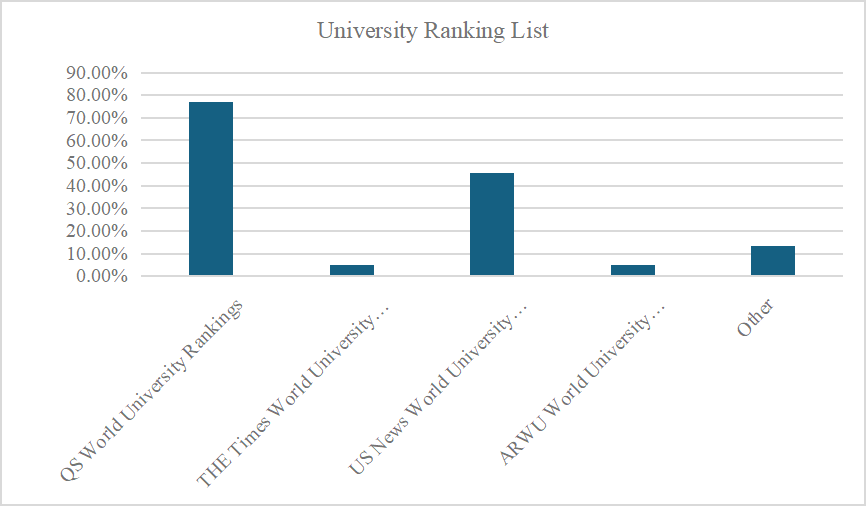
V. Conclusion
Based on the above data, we are basically clear on what we need to represent on our webpage.
First, in terms of broad aspects, we will prioritize reflecting the employment prospects of the university, followed by academic factors, environment, cost of living, and lastly, campus culture.
Second, under each of these major areas, the importance of more detailed factors has also been clarified.
In the “Academic Factors” section, we will prioritize the University's specialty ranking and academic reputation, which are equally important for most students. These are followed by curriculum’s flexibility and academic stress, and finally comprehensive or specialized university and teacher-student ratio.
In the “Campus Environment” section, we will prioritize the University’s campus facilities, which is the most important factor that students considered in this part. Safety and conveniency of the college are followed behind. These two factors have a lot to do with the student’s living comfort level. Geographic location and campus size are behind, which are related to the location of the college is in urban or rural areas. The last one is the university’s greening degree, which seems not so important to most students.
In the “Cost of Living” section, we will prioritize the consumption level of the surrounding community, which basically determine the student’s comfort level in the University. Tuition and scholarships are in the second place, and the availability of accommodation is behind.
In the “Employment Prospect” section, we will prioritize the University’s occupation rate, which related to students' standard of living after graduation. After that is internships and alumni networks.
In the “Campus Culture” section, we will prioritize school’s philosophy, which shows the college’s culture for most. Featured societies and the percentage of international students on campus will be considered behind.
Lastly, users of the website can choose the University ranking list they most concerned between QS World University Rankings and US News World University Rankings.